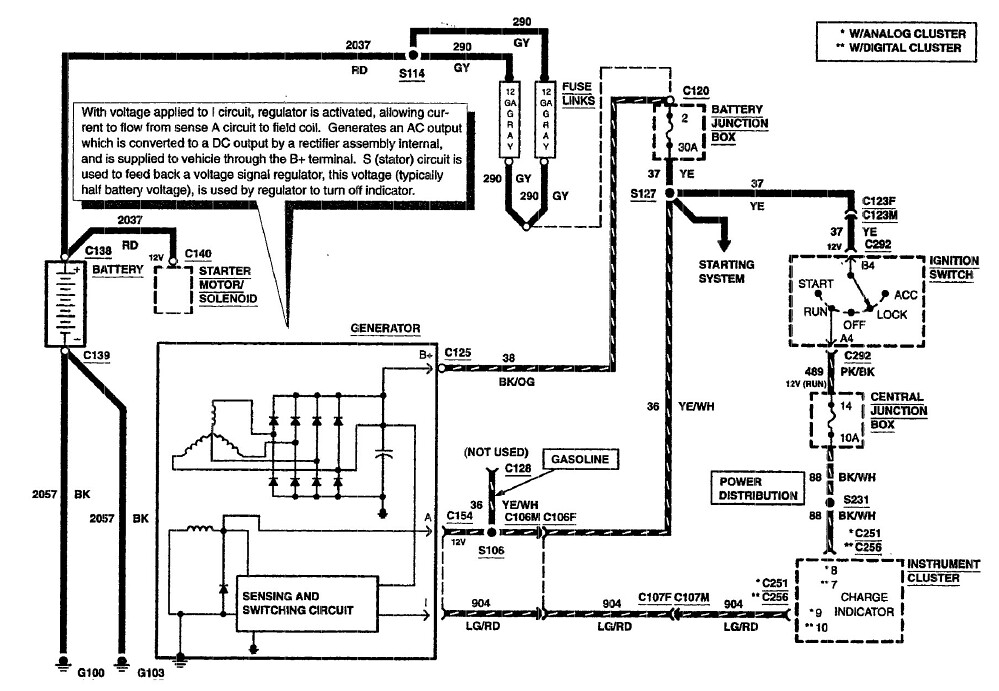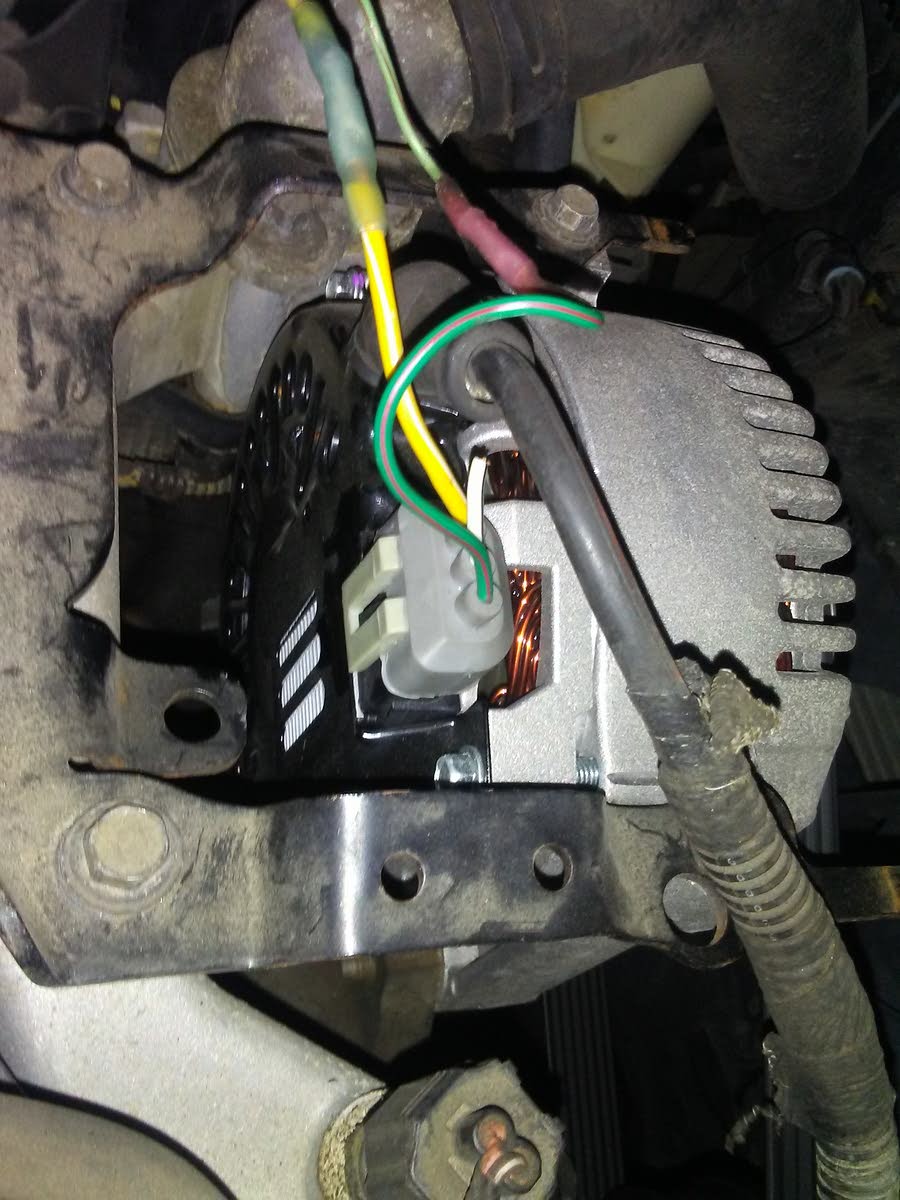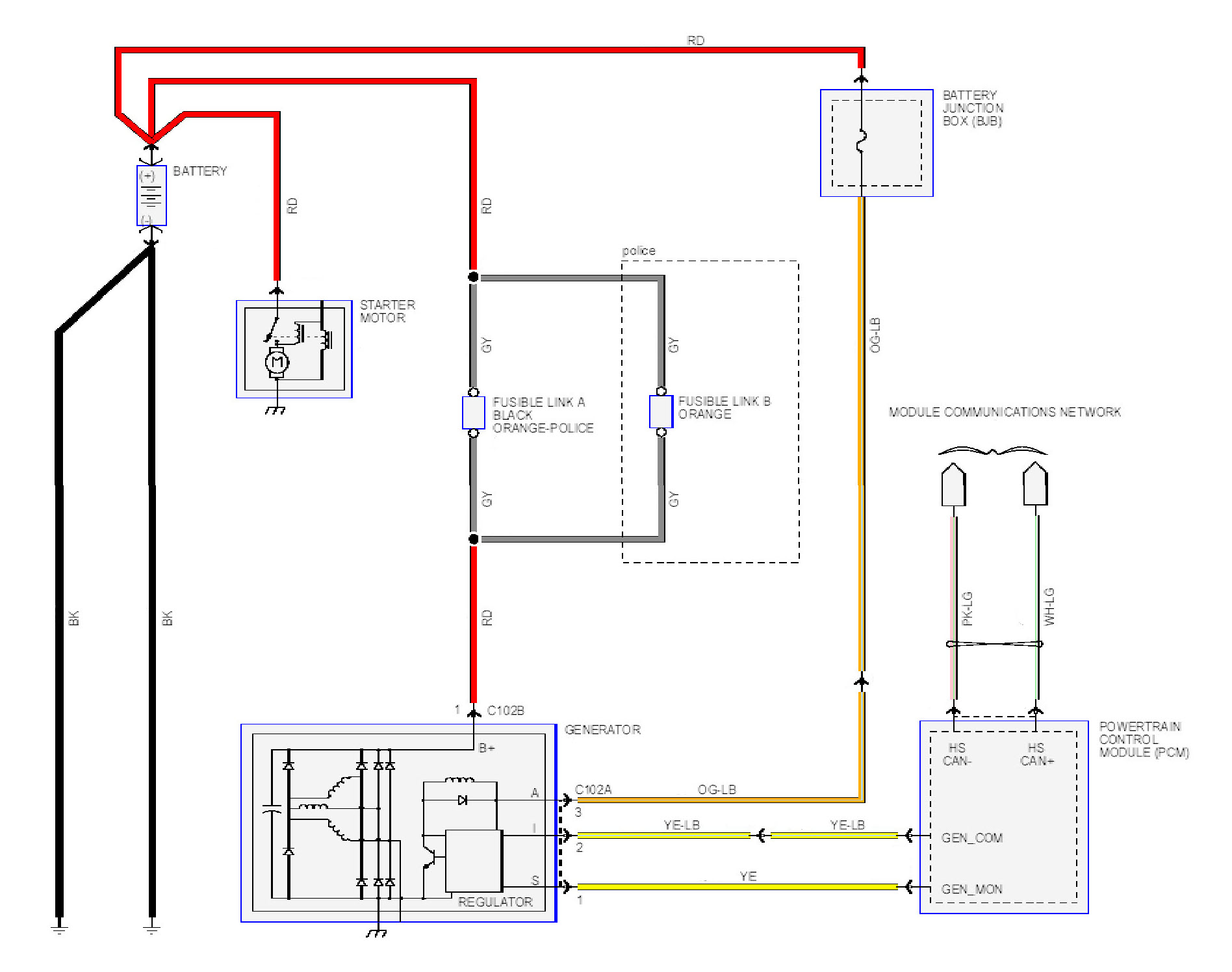Crown Vic Alternator Not Charging
The issue of a Crown Vic alternator not charging may be due to a faulty alternator or wiring. To resolve this, have the alternator and wiring system inspected by a professional mechanic.
When your Crown Vic alternator is not charging properly, it can lead to battery draining and various electrical problems. Timely troubleshooting and fixing of the alternator issue are crucial to ensure your vehicle’s proper functioning. In this guide, we will explore common reasons for alternator failure in Crown Vic models and effective solutions to rectify the charging problem.
By addressing these issues promptly, you can avoid potential breakdowns and ensure optimal performance of your vehicle. Let’s delve into the troubleshooting steps to resolve the alternator charging issue in your Crown Vic.

Credit: www.crownvic.net
Signs Of A Non-charging Alternator
It’s crucial to recognize the signs of a non-charging alternator in your Crown Vic, as a failing alternator can lead to numerous electrical and mechanical issues. Being proactive in identifying these signs can help prevent potential breakdowns and costly repairs. Let’s take a closer look at two common indications of a non-charging alternator.
Dimming Headlights
One of the primary signs of a non-charging alternator in your Crown Vic is dimming headlights when the vehicle is running. This occurs because the alternator is unable to supply enough power to the electrical system, causing the headlights to lose their brightness. If you notice your headlights dimming while driving, it’s essential to address the issue promptly to avoid further complications.
Battery Warning Light Illuminated
Another noticeable indicator of a non-charging alternator is the battery warning light illuminating on your dashboard. This light typically indicates that the battery is not receiving a proper charge from the alternator. Ignoring this warning may result in a drained battery and potential stalling of the vehicle. When this warning light appears, it’s crucial to have the alternator inspected and repaired to ensure the proper functioning of your Crown Vic.

Credit: www.cargurus.com
Possible Causes For Alternator Not Charging
It can be frustrating when your Crown Vic alternator is not charging properly. Below are some common reasons why your alternator may not be charging as it should:
Faulty Alternator
If you suspect a faulty alternator is causing the issue, it’s crucial to have it checked by a professional for a proper diagnosis and potential replacement.
Loose Or Damaged Belts
Check for any loose or damaged belts that may be affecting the alternator’s ability to charge properly. Tightening or replacing the belts could solve the problem.
Faulty Voltage Regulator
A malfunctioning voltage regulator can also lead to alternator charging issues. Consulting a mechanic to inspect and replace the voltage regulator may be necessary.
Diagnosing The Issue
If your Crown Vic alternator is not charging, it is crucial to diagnose the issue promptly to prevent further damages.
Testing The Battery
Begin the diagnostic process by testing the battery’s voltage using a multimeter.
Checking Belt Tension And Condition
Inspect the alternator belt tension and its condition to ensure proper operation.
Testing The Alternator Output
Verify the alternator’s output by testing it with a voltmeter when the engine is running.
Steps To Fix A Non-charging Alternator
When your Crown Vic’s alternator is not charging, it can lead to various electrical issues, leaving you stranded. Luckily, there are a few simple steps to fix a non-charging alternator that can save you time and money. Here are the methods to resolve this issue:
Replacing The Alternator
If your Crown Vic’s alternator is not charging, the first step is to check the alternator. Ensure to disconnect the battery and then remove the old alternator. Install the new alternator, reconnect the battery, and test to see if the charging issue has been resolved.
Replacing Belts
If the alternator belt is slipping or worn, it can cause the alternator to not charge properly. Inspect the belts for wear or damage. Replace the belts if necessary, ensuring they are properly tensioned. This may resolve the charging issue with the alternator.
Repairing Or Replacing The Voltage Regulator
If replacing the alternator and belts does not solve the issue, the problem may lie with the voltage regulator. Test the voltage regulator for proper function using a multimeter. If it’s found to be faulty, repair or replace the voltage regulator to ensure the alternator begins charging correctly.
Maintenance Tips To Prevent Alternator Issues
Regular Inspections
Regular inspections are essential to identify and address any potential issues with your Crown Vic alternator. Periodically checking the condition of your alternator can help prevent major problems down the line.
During inspections, look for signs of wear or damage such as loose or frayed belts, corroded connections, or excessive dust accumulation. Addressing these issues promptly can save you from costly repairs and potential breakdowns.
Keeping Belts In Good Condition
The belts play a crucial role in the functioning of your alternator. They transfer power from the engine to the alternator, allowing it to generate electricity. Keeping the belts in good condition is crucial for the overall performance of your vehicle’s charging system.
To ensure the belts are in optimal condition, regularly inspect them for signs of wear and tear like cracks, glazing, or excessive slack. If you notice any issues, it is recommended to replace the belts immediately with high-quality replacements compatible with your Crown Vic.
Monitoring Battery Voltage
Monitoring the voltage of your battery is another vital maintenance tip to prevent alternator issues. A low or fluctuating battery voltage could indicate a problem with the alternator’s charging capacity.
Using a voltmeter, measure the voltage across the battery terminals while the engine is running. A healthy alternator should provide a voltage reading between 13.8 and 14.5 volts. If the voltage is consistently below or above this range, it may indicate an alternator problem that needs to be addressed.
Additionally, pay attention to warning indicators on your vehicle’s dashboard, such as battery or alternator warning lights. If these lights illuminate or flicker, it may be a sign of a faulty alternator that requires immediate attention.
By following these maintenance tips, you can prevent alternator issues and ensure the reliable performance of your Crown Vic. Regular inspections, keeping belts in good condition, and monitoring battery voltage are simple yet effective ways to keep your alternator charging smoothly.

Credit: cvpi.club
Frequently Asked Questions On Crown Vic Alternator Not Charging
What Will Cause An Alternator To Not Charge?
Possible causes for an alternator not charging include a faulty alternator belt, a broken rotor or stator, a damaged diode, or a defective voltage regulator.
Can A Fuse Cause Alternator Not To Charge?
Yes, a blown fuse can prevent the alternator from charging the battery. When the fuse is blown, it interrupts the flow of electricity to the alternator, causing it to malfunction. It’s important to check the fuse if your alternator is not charging.
How Do You Check If My Alternator Is Not Charging My Battery?
To check if your alternator is not charging your battery, use a multimeter to measure the voltage output. Start the car and connect the multimeter to the battery terminals. A reading below 13. 8 volts indicates a potential issue with the alternator.
Why Is My Alternator Not Producing Current?
The alternator may not produce current due to a faulty wiring connection or a worn-out alternator belt. Check for any loose wiring or belt tension issues.
Why Is My Crown Vic Alternator Not Charging?
The alternator may not be working due to a faulty voltage regulator or a damaged wiring connection.
What Are The Signs Of A Failing Alternator?
Dimming headlights, frequent battery drainage, and squealing noises are common signs of a failing alternator.
How Does An Alternator Charge The Battery?
The alternator converts mechanical energy from the engine into electrical energy, which is then used to charge the battery.
Conclusion
Addressing the issue of a Crown Vic alternator not charging requires swift action to prevent further complications. By understanding the potential causes and taking the necessary steps to rectify the problem, you can ensure the smooth operation of your vehicle.
Regular maintenance and professional assistance are crucial in maintaining the functionality of the alternator.
